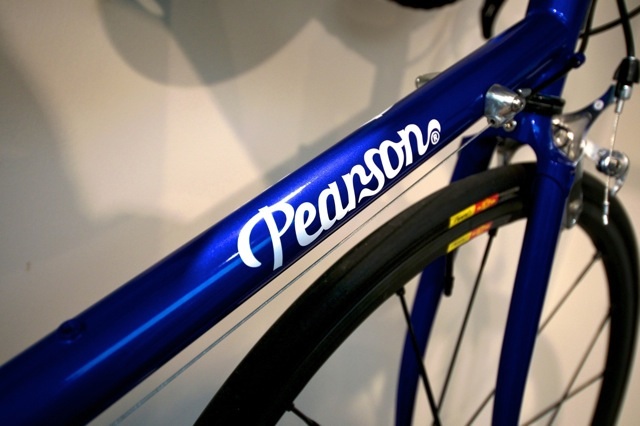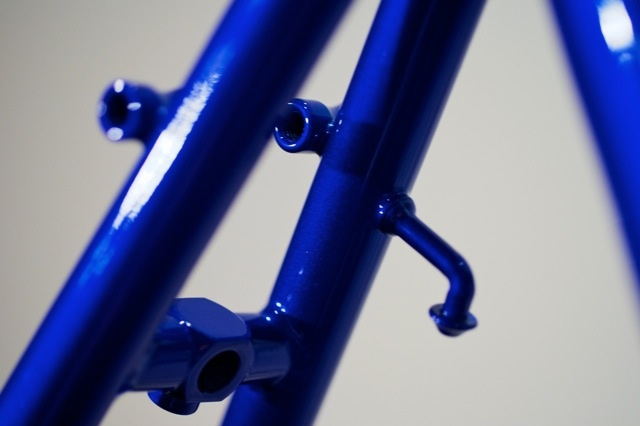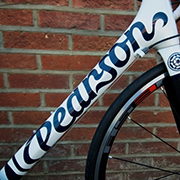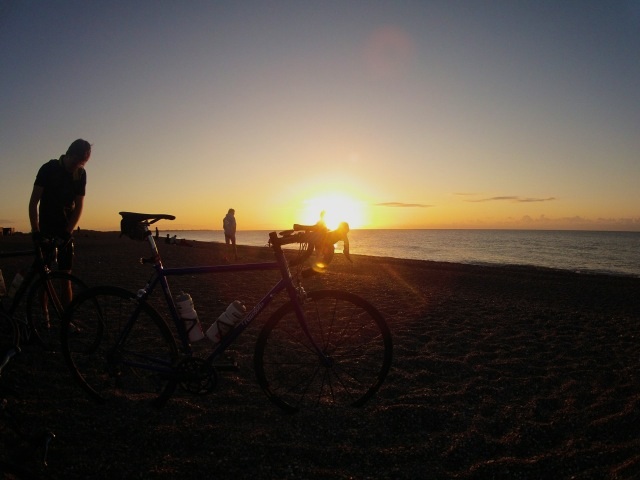Our attempts last month to celebrate a ‘summer of cycling’ were held in the wettest June on record.
Something was needed to steel our nerve for the final task on our ‘to do’ list: the month-ending Dunwich Dynamo (a ride through the night from the central London to the Suffolk coast. You can read all about here).
The ‘something’ needed, as with so much in life, was a new bike. To have ordered something off the peg, however exotic, would have been to miss the point of the Dynamo.

It’s an idiosyncratic event, far removed from the increasingly corporate world of mass participation rides (it’s free, for a start) and we decided an idiosyncratic machine was required for the task.
To that end, we called our friends at Pearson Cycles, who recommended their “Easy Come, Easy Go”, a Reynolds 631 frameset with touring inclinations.
It proved in every inch, angle and detail the ideal long range cycle or winter trainer. A spindly classic steel fork at the front end with eyelets for racks and guards finished the lines of the frame well. The requirement for long drop calipers to accommodate substantial mudguards (which, against all the odds, proved unnecessary), good clearance around the chain stays to allow for the accumulation of muck and grime, even the addition of pump pegs for a traditional longer barreled device, added up to something pleading for a mission like the Dynamo.

How to equip such a machine, and for such an event? Idiosyncratic is all well and good (the Dynamo was completed last year by a cyclist on a ‘Boris bike’) but reliability should be more than after thought when preparing for a ride of 120 miles.
Our next call was made to Madison, who kindly supplied a Shimano 105 groupset in slate grey, a pair of long drop Shimano calipers, a pair of Pro handlebars, and some Pro gel bar tape.
The wheelset chose itself. We have a set of Mavic Ksyrium SLRs on test and the ‘two birds, one stone’ solution offered by the Dynamo was too good to pass up.
Pressed for time, we assembled the machine in the back room on the eve of the event, normally a hazardous juncture at which to complete such a task, often fraught, and filled with the potential for mangled fingers and dropped bolts as the stress of preparation overwhelms the simplest task. However, the Pearson glided together with all the certainty of fate. A minor tweak of the rear mech hanger in the morning (which had been a tiny bit out of true) solved a residual shifting issue.
How did it ride? Check out the blog. The joys of a building a bike (the careful choice of frame and componentry, the painstaking assembly) will require no explanation to anyone in love with cycling. Choosing a ride, or type of riding, and working back to the machinery required for the task is, when all said and done, a pretty sensible approach. Thanks to Pearson and to Madison for their help with our adventure.


